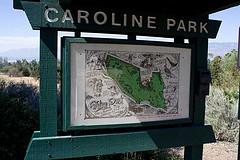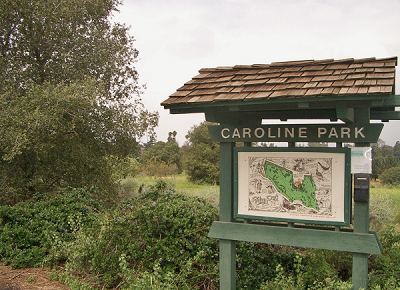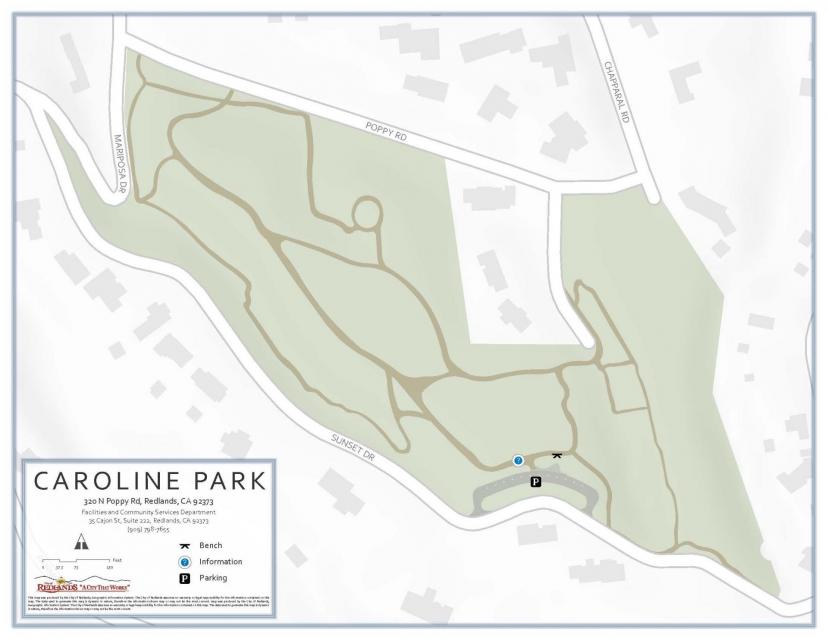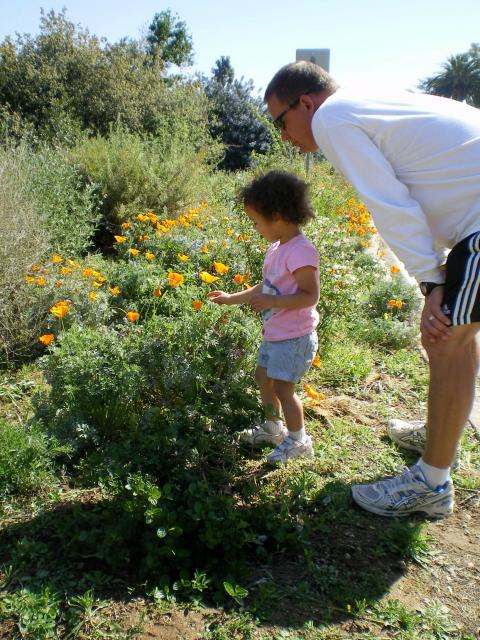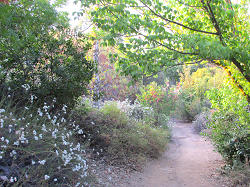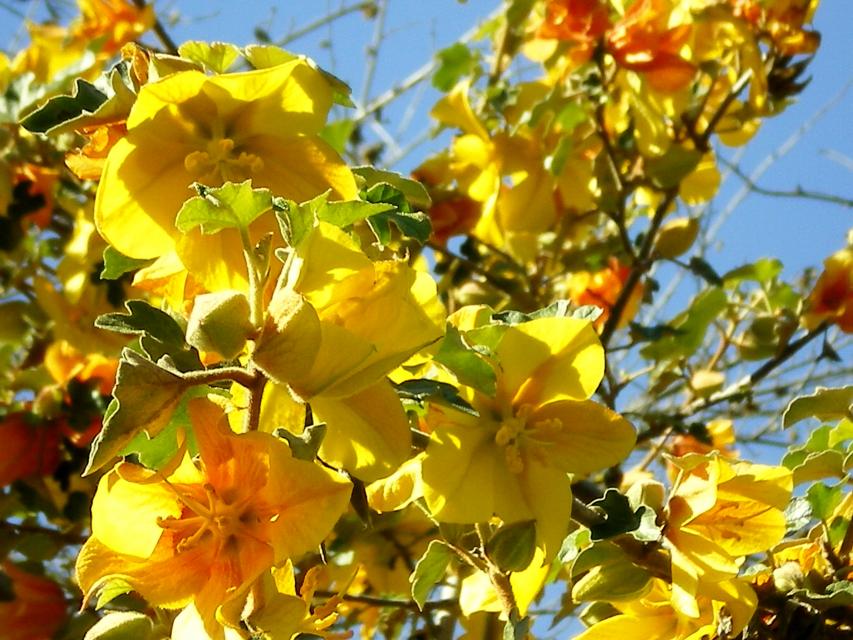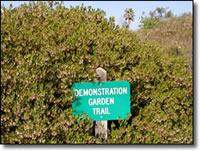Caroline Park
Hours: Dawn to Dusk
Activities:
-The park and botanical nature garden is enjoyed by naturalists, dog walkers, picnickers, homeschoolers, walkers and runners.
-The overlook terrace off Sunset offers some parking and a dramatic 180 degree view of the mountains ringing Redlands.
-While there are no restrooms or playground equipment, Caroline Park offers a unique park experience
The History
Caroline Park, located between Sunset Drive, Mariposa Drive and Poppy Road in Redlands, was donated to the City of Redlands in 1929 by Olivia Phelps Stokes in memory of her beloved sister Caroline. After the family fortune (Phelps Dodge Corporation) helped the sisters travel extensively throughout the U.S, they chose Redlands to build their winter home. When Olivia donated the 16.8 acre piece next to their home to the city for use as a park, she stipulated it to remain in its natural state as much as possible.
In 1987, a third generation Redlands resident, Dr. Harold Hill, who was Chairman of the City Parks Commission and active Redlands Rotary member, envisioned a native plant botanical park that was revegetated with attractive shrubs, trees and wildflowers. The concept he presented to the City was accepted and a task force of Rotary Clubs and the City Parks Department developed the park, with Redlands residents donating vital monies, landscaping and irrigation infrastructure, professional services, expertise and lots of hours.
The Plants
Caroline Park contains several habitats, including woodlands and a variety of chaparral plants, but isprimarily a great example of the dwindling Coastal Sage Scrubhabitat. Sage Scrub is characterized by low-growing aromatic shrubs that have specially adapted to Southern California’s Mediterranean climate. Since it tends to occur on low elevation slopes that are ideal for development, the loss of coastal sage scrub is ongoing throughout California. Healthy specimens of several oak species (live oaks as well as the rare Engelmann) dot the sloping hills of Caroline Park. Coastal sage plants typically produce lusher, larger winter leaves and tiny, gray-green leaves during the hot summers.
Most common plants in Caroline Park:
Trees: coastal live oak, valley live oak, Engelmann oak, scrub oak, California buckeye, coulter pine, elderberry, desert willow, sycamore, western redbud
Shrubs: baja fairy duster , bladderpod, California coastal sagebrush, California buckwheat, coast goldenbush, coast sunflower, coffeeberry, chamise, ceanothus (several varieties), deerweed, fremontia, golden currant, island bush poppy, laurel sumac, lemonadeberry, manzanita (several species), matilija poppy, mahonia, monkeyflower, Oregon grape, penstemon (several varieties including Keckiella cordifolia), spiny redberry, wild rose, sugar bush, sage (white, black, Cleveland), toyon, wild rose
Native annual wildflowers: California poppy, baby blue eyes, Canterbury bells, goldfields, mariposa lily, owl’s clover, pearly everlasting, penstemons, red maids, tidy tips
Irrigation System
Once established, native vegetation requires little water. The park uses four types of irrigation, usually for one to two hours per week, but each suited for plant types and locations:
- spray irrigation for small scrubs, groundcover or turf areas (high rate applied for 15-20 min)
- mini-spray irrigation for small shrubs/turf (relatively low rate for 15-40 minutes)
- rotary stream irrigation for larger shrubs (relatively low rate for 30-60 min)
- deep irrigation for individual plants, trees (very low rate for 3-10 hours)
The Wildlife
Native plants provide wonderful habitat value and an intricate web of life, starting with the berries and insects that attract a host of birds, which in turn attract raptors. Caroline Park provides cover and food sources for a variety of mammals and other members of the animal world.
The following have been sighted during the last few years:
Birds: band-tailed pigeons, mourning doves, California quail (a covey of 20-30), California and rufous sided towhees, California thrasher, western bluebird, hawks (red-tailed, red-shouldered), owls (great horned, barn), wrentit, roadrunner, orioles, scrub jay
Mammals: California ground and tree squirrels, mice, gray fox, opossum, cottontail rabbit, coyotes, mule deer, packrats raccoon, skunk
Other: Lots of lizards, snakes, coast horned lizard, and a host of butterflies and insects

